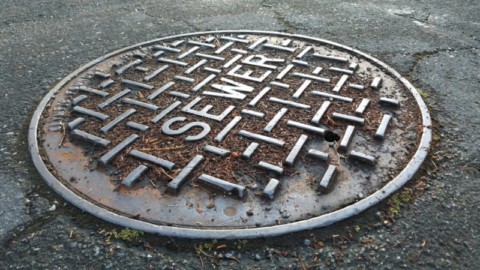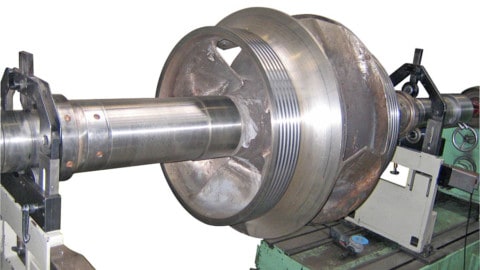By Ron Astall, United Pumps Australia
Long-time readers of Pump Industry will be familiar with Ron Astall’s popular series of articles on understanding pump curves. In this installment, Ron is back to explain how to select centrifugal pumps for very low flow.
If anyone can remember my previous dissertations; Understanding pump curves #5 and #6 you will recall our exhortations to select centrifugal pumps to operate as close as possible to their best efficiency point (BEP). Indeed, this is enshrined in most pump engineering standards. The American Petroleum Institute standard API 610 has a strong preference for pumps to be selected to operate between 80 per cent and 110 per cent of BEP and most other specifications echo a similar requirement.
I am going to suggest; possibly controversially; that this is not always the best approach for efficiency and power consumption. I propose that in some circumstances we ignore the accepted wisdom. For an engineer this can be scary! A variation on an old children’s joke illustrates this; “Why did the engineer cross the road? They looked in the file and that’s what they did last time”.
A senior machinery engineer once bluntly warned me about blindly following a specification; saying that “a specification is the first refuge of the incompetent”. Having now possibly insulted many of you, let us review the generally accepted wisdom.
It is best practice to select and operate pumps close to their BEP
Generally, this is absolutely true. Why do we want to operate pumps close to BEP? Consider this example from the PIA pump handbook (Figure 1):

Figure 1 –Courtesy PIA Australian Pump Technical Handbook
To recap, Figure 1 is generalised but provides a convenient overview of the scary symptoms associated operation well away from BEP with issues such as:
• Increased internal turbulence
• Recirculation
• Increased pressure fluctuations
• Increased vibration due to the above
• Increased axial thrust – depending on pump hydraulic balance method
• Increased radial thrust; particularly with single volute casings
• Temperature rise due to high internal energy loss
High radial (side loading) on the shaft is a real problem when pumps are operated at low flows. Premature bearing failure is a risk, along with shaft breakage. In Figure 2, I have added the radial loading. The red and the blue lines show how the radial load varies with operating point for both a single volute casing and a double volute casing respectively:

Figure 2 –Courtesy PIA Australian Pump Technical Handbook
So, what are the circumstances where we might place less importance on this sage advice? The answer is when we have very low flow duty points. This is all about the parameter Specific speed (Ns).
Specific speed:
This was discussed in Understanding pump curves #7 – are your pumps running too slowly? The parameter Specific Speed (Ns) relates to impeller shape, which influences pump efficiency. Specific Speed is calculated at the BEP of a pump, as shown in Figure 3.

Figure 3
From the Ns formula, the mathematicians amongst us will see that for a given RPM and head, a low BEP flow rate will give us a low Ns, and a narrow impeller. Narrow impeller passages are inherently less efficient than the more open passages of higher Ns impellers.
What can happen is that a small pump selected at BEP for a low flow rate service may have a lower operating efficiency than a larger pump running back on its curve. Figure 4 shows just one example of two pumps selected for the same duty.

Figure 4
The pump ‘B’ selection looks ugly. Pump ‘A’ is running close to BEP and gives us a warm fuzzy feeling. It should be a smooth, reliable pump. And it will be. But, pump ‘B’ is more than eleven percentage points more efficient than pump ‘A’ and will use 33 per cent less power (5.6kW less). In continuous operation that will be 49,056 fewer kilowatt-hours per annum, and at 15c per kilowatt-hour, that equals $7,358.00 a year of cost savings. This is not an unusual example. The purists and devotees of the accepted wisdom will prefer Pump ‘A’. Those striving for power savings will prefer pump ‘B’.
Can a pump running back on its curve be reliable?
Yes it can. Typically the minimum Continuous Stable Flow (MCSF) quoted by experienced manufacturers will be around 25 per cent to 35 per cent of BEP flow. A selection in this region and above is not necessarily a reliability trap if it is done for efficiency reasons.
The purists and the devotees of rigid specifications may howl, but yes, a properly engineered pump can be designed for the radial loads and the bearing life. Modern shaft design can provide sufficient rigidity for reliability and mechanical seal life. The important question is the total cost of ownership. No one wants to trade away reliability for a better efficiency, if the trade means higher maintenance costs and unplanned outages.
How do we ensure reliability?
Casing design:
- If we look back at Figure 2, it is obvious that a double volute pump will have a much lower radial loading on the shaft and bearings. Go for a double volute or a multiple volute (diffuser) casing if available. This will reduce the radial loads at partial capacity.
- In smaller pumps, sometimes circular single “volute” casings are used to reduce side loads at partial capacity. With a circular casing, the side loading typically increases with flow and is reduced at partial capacity. Rugged bearing frames:
- Yes, every pump brochure says the design of their bearing frame is rugged. But some are more rugged than others.
- Pump manufacturers have various standard bearing frames in their range; each of which will support a number of hydraulic sizes (wet ends). Each bearing frame is designed to handle the largest wet end in its group. If your selected pump is not the largest on that frame size, then it is overdesigned. That’s good news.
- Use an accepted design standard that stipulates bearing life and shaft deflection criteria such as ANSI B73.1, ISO 5199 or – if you are really serious – API 610.
Summary
I am not suggesting that it is better to run a particular pump back on its curve than at BEP. We like to select our pumps to run at BEP.
However, for very low flow rates, chasing pumps with a BEP to match the duty may not give us the best selection. What I am proposing is that sometimes, the best pump selection may not be the one that follows the accepted rules.
Be prepared to bend the rules when your analysis shows you a better way. You may end up with a slightly larger pump that has better efficiency, lower power costs; and with attention to design it can be as reliable.














